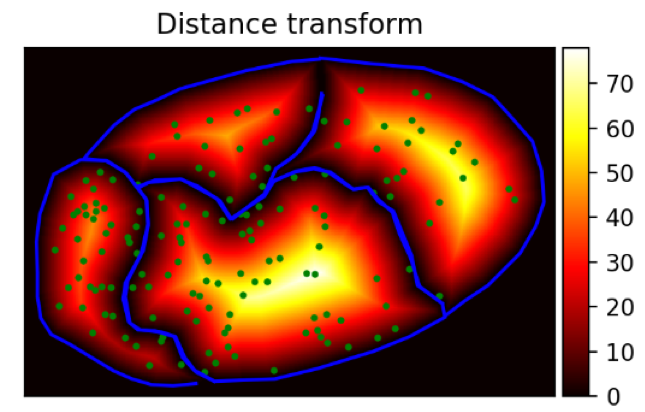This repository provide the different workflows to analyze RNA localization patterns in c. elegans from single molecule FISH (smFISH images), described in our paper:
Title: mRNA localization is linked to translation regulation in the Caenorhabditis elegans germ lineage.
Authors: Dylan M. Parker, Lindsay P. Winkenbach, Samuel P. Boyson, Matthew N. Saxton, Camryn Daidone, Zainab A. Al-Mazaydeh, Marc T. Nishimura, Florian Mueller, Erin Osborne Nishimura
Publisher: Development. 2020 Jul 8;147(13):dev186817. doi: 10.1242/dev.186817.
Analysis is performed with Matlab and Python. Python scripts are provided as ImJoy plugins to simplify usage.
Here we provide only a brief overview. The officiel documentation with usage is at: https://muellerflorian.github.io/parker-rna-loc-elegans/.
parker-rna-loc-elegans package requires only a standard computer.
This package has been tested on macOS on the following systems:
- macOS: High Sierra (10.13.6) on a Mac Pro (late 2010)
RNA detection is performed with our prevously published Matlab package FISH-quant.
FISH-quant requires the following toolboxes:
- Optimization toolbox
- Statistics toolbox
- Image processing toolbox
- (Optional) Parallel processing toolbox
FISH-quant has been tested on Matlab 2017b.
ImJoy plugin were tested on ImJoy (v0.9.93) running on Google Chrome (Version 77) with the ImJoy plugin engine (0.8.22).
More information on ImJoy: https://arxiv.org/abs/1905.13105
parker-rna-loc-elegans mainly depends on the Python scientific stack, a few smaller libraries
are required to read FIJI region definition files.
Complete list of dependencies can be found in here.
You can obtain the latest version of FISH-quant here.
Installation instruction are provided. Installation time is rapid and requires only to download the most recent version.
The provided workflow requires the installation of the ImJoy plugin engine, which has to be installed only once, which takes several minutes.
Installation links to all plugins are provided and installation time for each plugin is in the range of several minutes for the first install.
We provide an example data-set, with detailed instructions for how data has to be organised. Then we detail in step-by-step instructions how to perform the analysis.
Demo data also contains the expected results, which are obtained in a few minutes.
The provided instructions for the demo data are directly applicable for new data.

